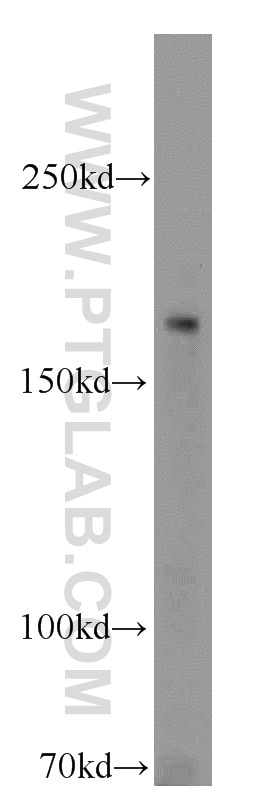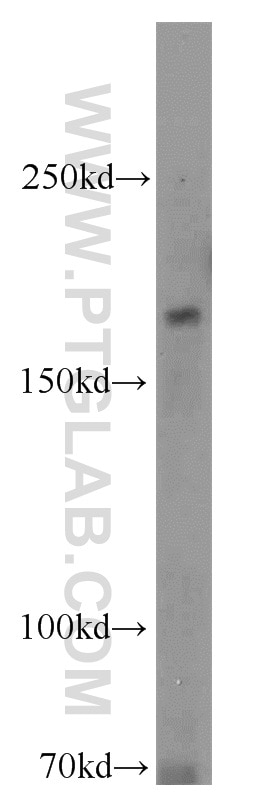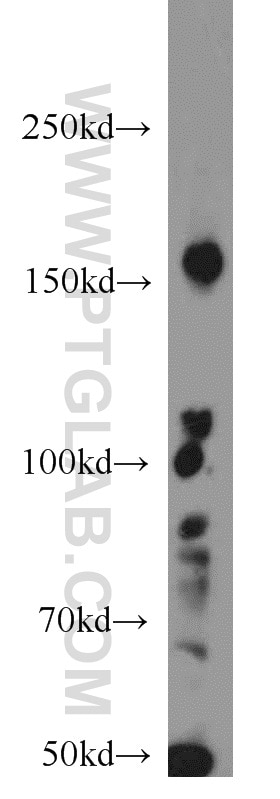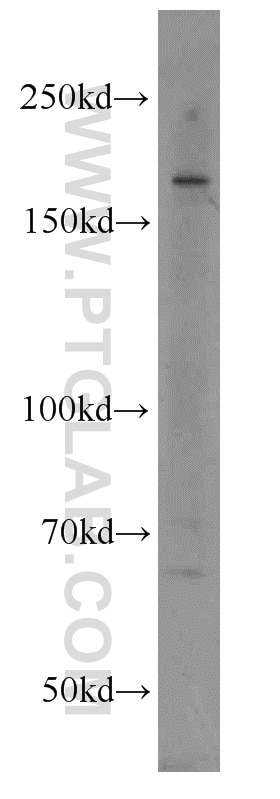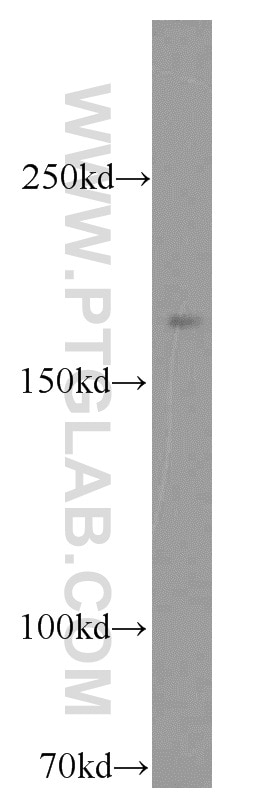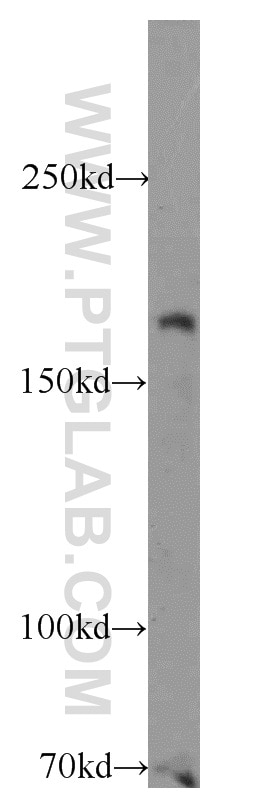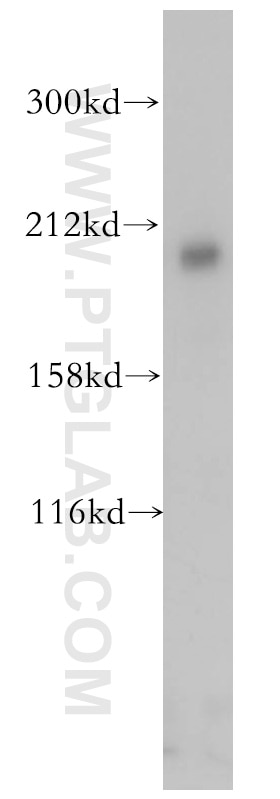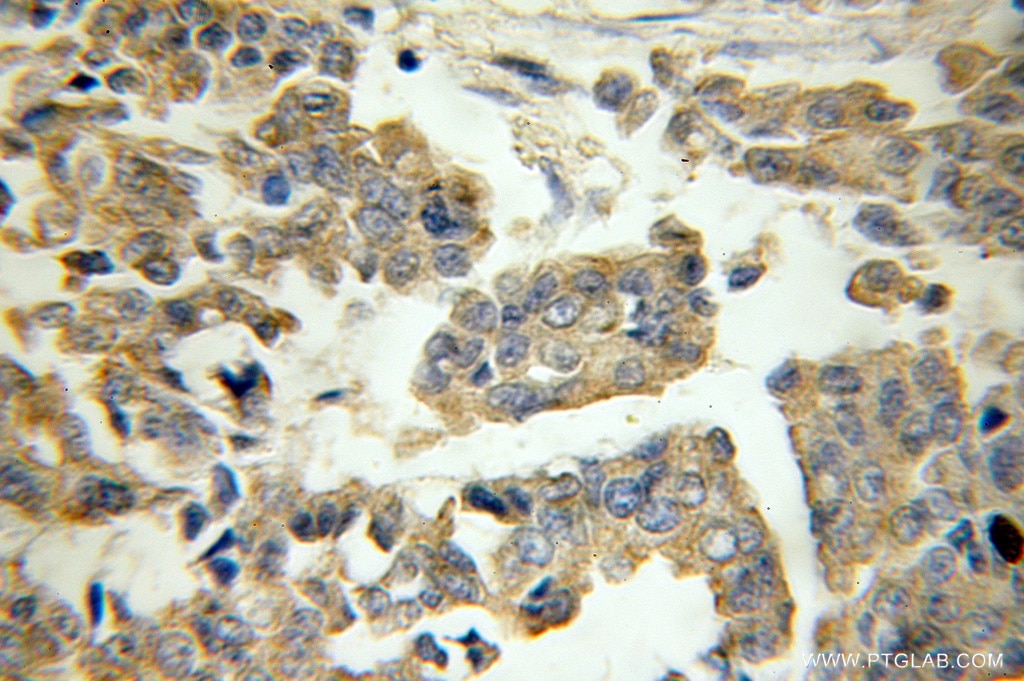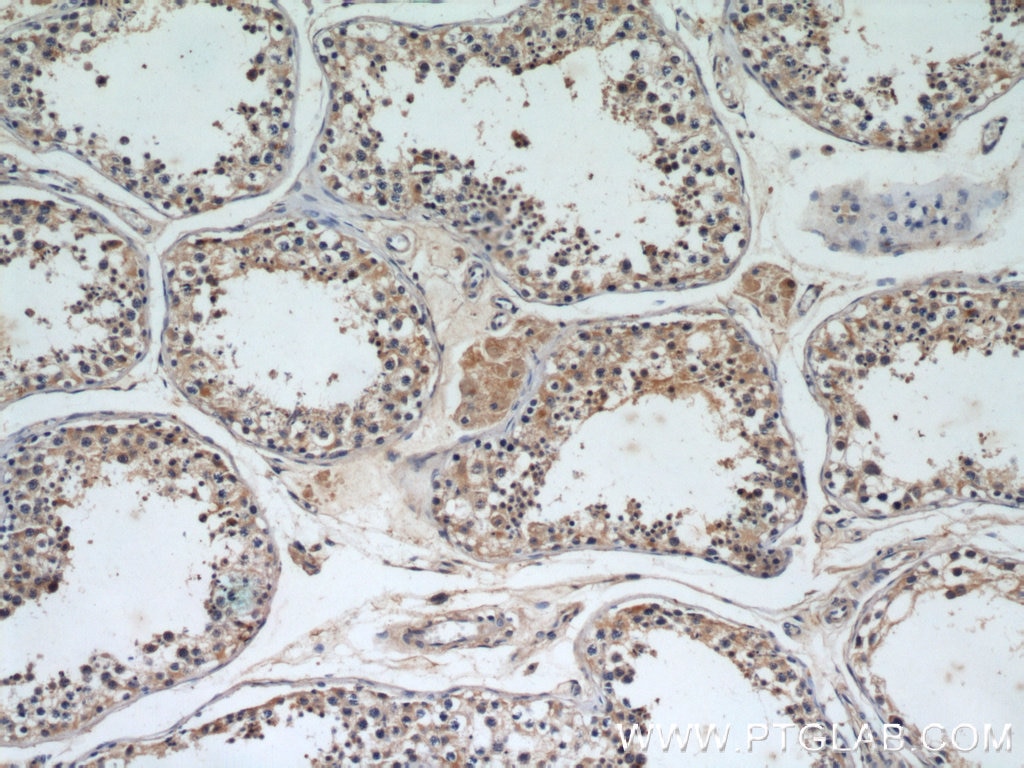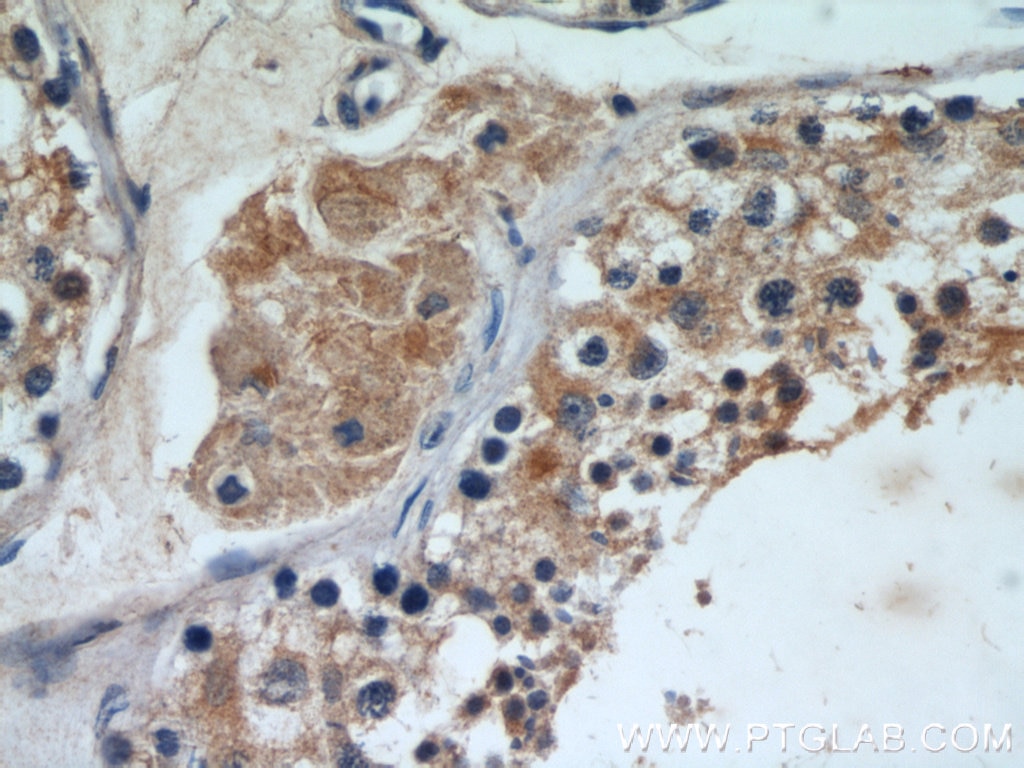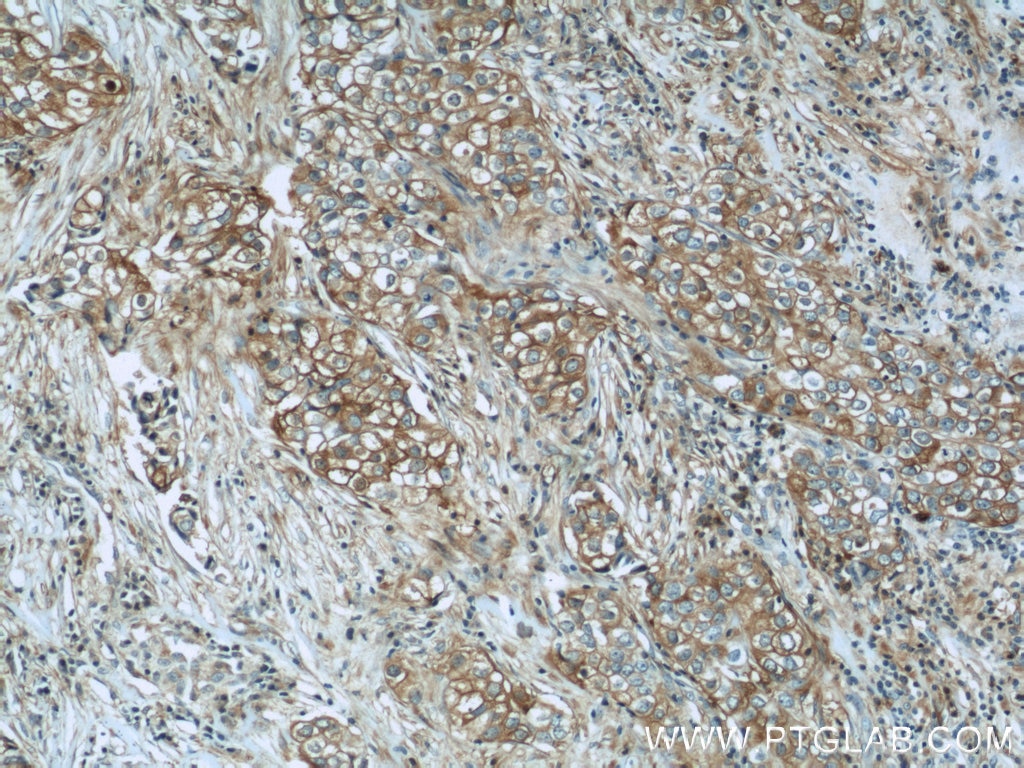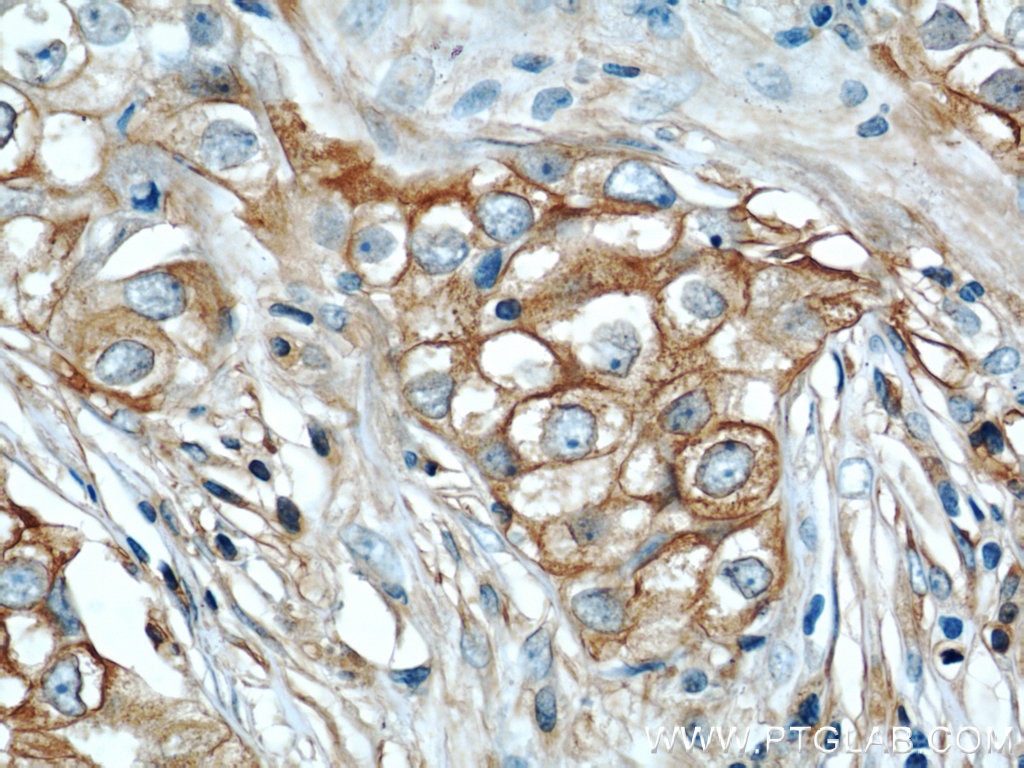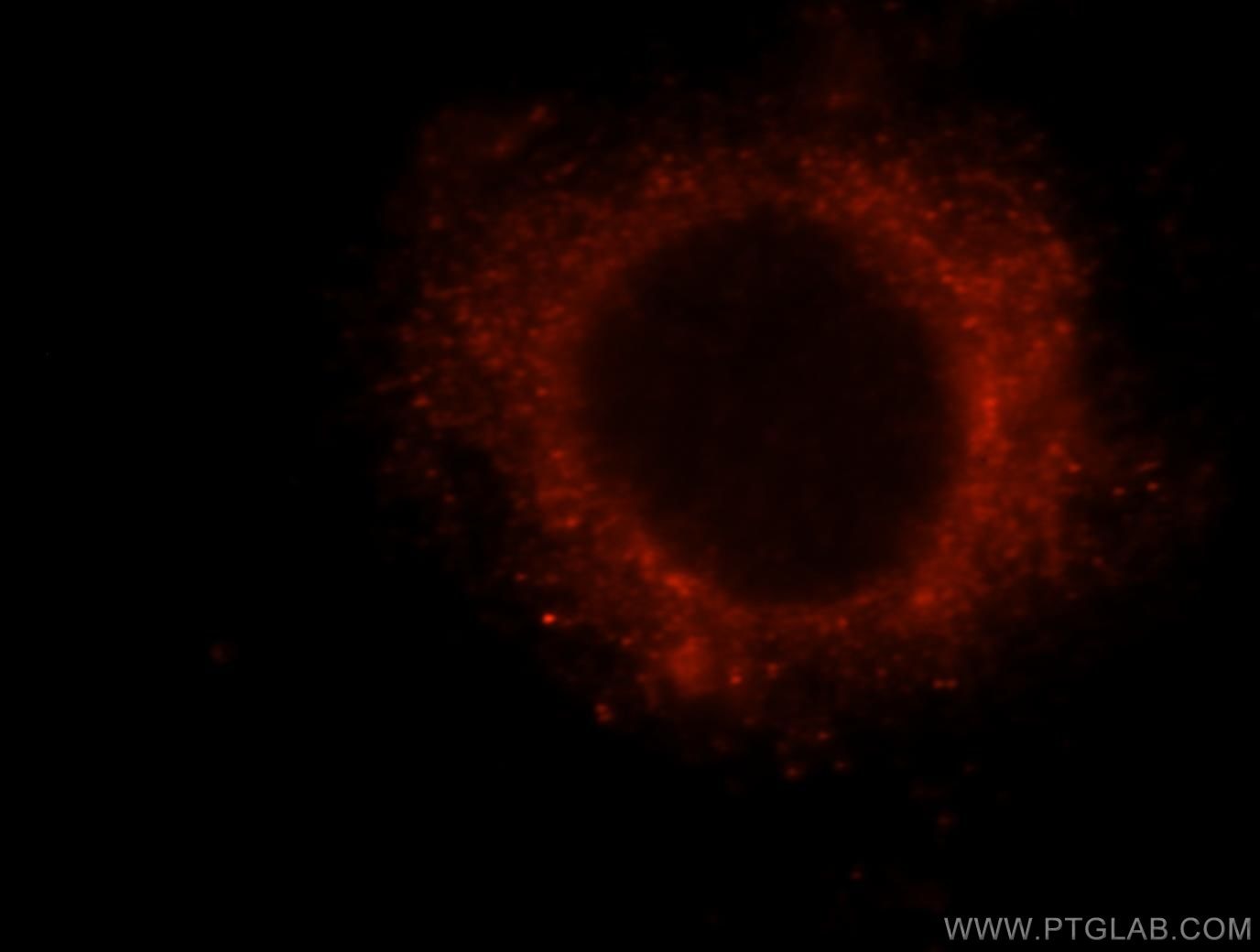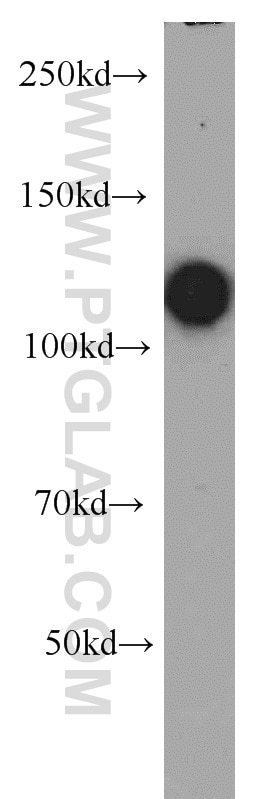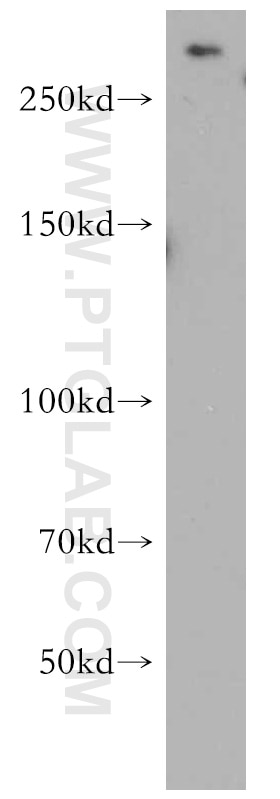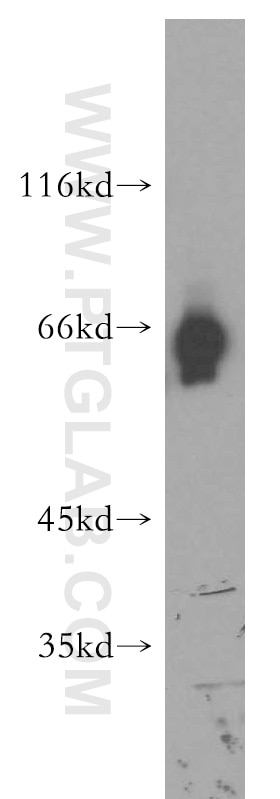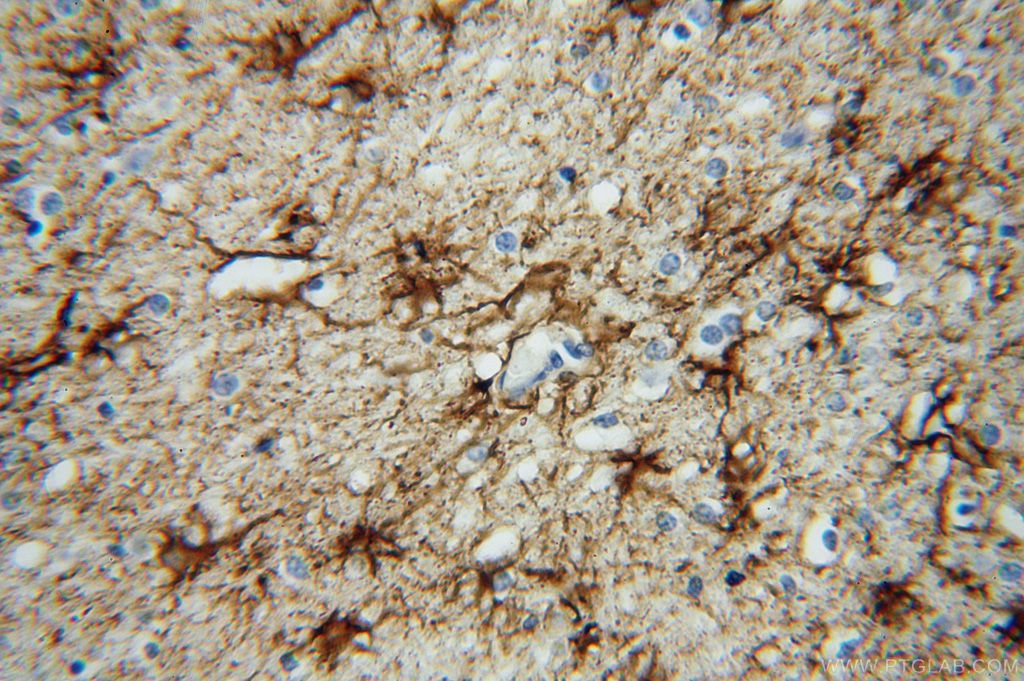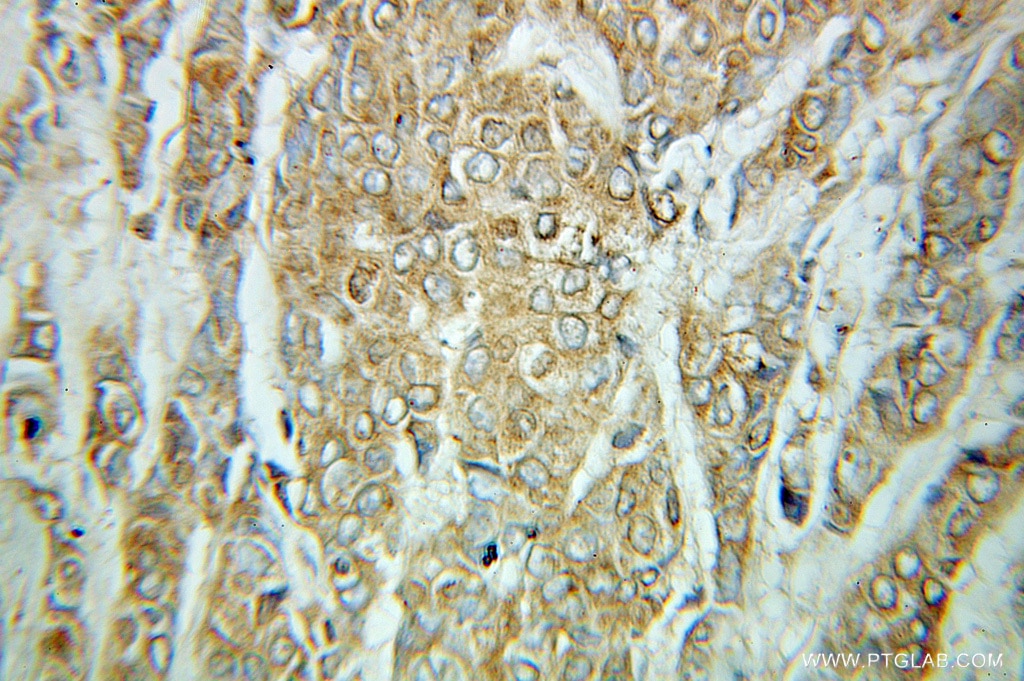- Phare
- Validé par KD/KO
Anticorps Polyclonal de lapin anti-RB1CC1
RB1CC1 Polyclonal Antibody for WB, IF, IHC, ELISA
Hôte / Isotype
Lapin / IgG
Réactivité testée
Humain, rat, souris
Applications
WB, IHC, IF/ICC, IP, ELISA
Conjugaison
Non conjugué
N° de cat : 10043-2-AP
Synonymes
Galerie de données de validation
Applications testées
| Résultats positifs en WB | cellules HeLa, cellules Jurkat, cellules MCF-7, tissu cérébral de souris |
| Résultats positifs en IHC | tissu de cancer du sein humain, tissu testiculaire humain il est suggéré de démasquer l'antigène avec un tampon de TE buffer pH 9.0; (*) À défaut, 'le démasquage de l'antigène peut être 'effectué avec un tampon citrate pH 6,0. |
| Résultats positifs en IF/ICC | cellules HeLa |
Dilution recommandée
| Application | Dilution |
|---|---|
| Western Blot (WB) | WB : 1:500-1:2000 |
| Immunohistochimie (IHC) | IHC : 1:20-1:200 |
| Immunofluorescence (IF)/ICC | IF/ICC : 1:10-1:100 |
| It is recommended that this reagent should be titrated in each testing system to obtain optimal results. | |
| Sample-dependent, check data in validation data gallery | |
Applications publiées
| KD/KO | See 9 publications below |
| WB | See 17 publications below |
| IHC | See 3 publications below |
| IF | See 7 publications below |
| IP | See 1 publications below |
Informations sur le produit
10043-2-AP cible RB1CC1 dans les applications de WB, IHC, IF/ICC, IP, ELISA et montre une réactivité avec des échantillons Humain, rat, souris
| Réactivité | Humain, rat, souris |
| Réactivité citée | rat, Humain, souris |
| Hôte / Isotype | Lapin / IgG |
| Clonalité | Polyclonal |
| Type | Anticorps |
| Immunogène | Protéine recombinante |
| Nom complet | RB1-inducible coiled-coil 1 |
| Masse moléculaire calculée | 1594 aa, 183 kDa |
| Poids moléculaire observé | 180-200 kDa |
| Numéro d’acquisition GenBank | BC017556 |
| Symbole du gène | RB1CC1 |
| Identification du gène (NCBI) | 9821 |
| Conjugaison | Non conjugué |
| Forme | Liquide |
| Méthode de purification | Purification par affinité contre l'antigène |
| Tampon de stockage | PBS avec azoture de sodium à 0,02 % et glycérol à 50 % pH 7,3 |
| Conditions de stockage | Stocker à -20°C. Stable pendant un an après l'expédition. L'aliquotage n'est pas nécessaire pour le stockage à -20oC Les 20ul contiennent 0,1% de BSA. |
Informations générales
RB1CC1, also named as RBICC, is implicated in the regulation of RB1 expression and functions as a DNA-binding transcription factor. It is a potent regulator of the RB1 pathway and a mediator that plays a crucial role in muscular differentiation[PMID:15968549 ]. Its expression is, thus, a prerequisite for myogenic differentiation. Involved in autophagy. RB1CC1 is required for autophagosome formation [PMID: 19258318]. It is probably involved in the tumorigenesis of breast cancer[PMID: 14533007]. RB1CC1 is frequently mutated in breast cancer and shows characteristics of a classical tumor suppressor gene[PMID: 21602932]. The immunogen of this antibody is C-terminal 154aa of RB1CC1.
Protocole
| Product Specific Protocols | |
|---|---|
| WB protocol for RB1CC1 antibody 10043-2-AP | Download protocol |
| IHC protocol for RB1CC1 antibody 10043-2-AP | Download protocol |
| IF protocol for RB1CC1 antibody 10043-2-AP | Download protocol |
| Standard Protocols | |
|---|---|
| Click here to view our Standard Protocols |
Publications
| Species | Application | Title |
|---|---|---|
Nat Immunol Guanylate-binding proteins convert cytosolic bacteria into caspase-4 signaling platforms.
| ||
Nat Cell Biol mTOR inhibits autophagy by controlling ULK1 ubiquitylation, self-association and function through AMBRA1 and TRAF6. | ||
Nat Struct Mol Biol Interaction between FIP200 and ATG16L1 distinguishes ULK1 complex-dependent and -independent autophagy. |
